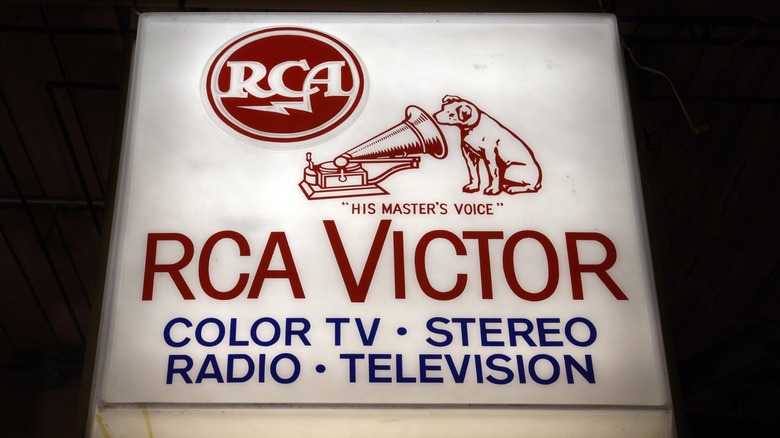Who Makes RCA TVs And Where Are They Built?
We may receive a commission on purchases made from links.
These days, some of the more recognizable names when it comes to TVs are brands like Sony, Samsung, LG, and Hisense. While there are still RCA televisions you can buy today, it's not as ubiquitous as the most popular major TV brands on the market. This is interesting, as there are few companies more important than RCA when it comes to television's place in culture and consumer technology. Among other notable achievements, for instance, RCA was instrumental in the development of NTSC standards for color TV — one of the most important advancements in TV history.
RCA actually predates television — the initials stand for Radio Corporation of America, which was formed in 1919. Technically, the history of the company goes even further back in time than this, as RCA was created during the reorganization of Marconi Wireless Telegraph Company of America, founded by Guglielmo Marconi. As the name of his company implies, Marconi invented the form of wireless communication that became quickly adopted around the world and helped usher in the modern 20th century: radio. In the 1920s, RCA and General Electric formed the broadcast radio company NBC, which is still around today, airing shows like "Law & Order" and "Saturday Night Live." RCA also played a role in other important innovations, like mainframe computers, color video, and the high-res cameras used by NASA to photograph the Moon.
As with many corporations, RCA has broken up into smaller companies and changed owners more than once, making its current lineage somewhat convoluted. The brand trademark "RCA" still has a lot of cachet in the consumer electronics market, though, and has been passed around between multiple companies. It is currently licensed by multinational corporation Curtis International, LTD, which still sells RCA televisions today.
Curtis International has factories around the globe
Curtis International is a Canadian company that has been manufacturing consumer electronics and home appliances since 1991. It focuses mostly on more affordable products rather than premium devices, and also licenses the ProScan and Sylvania trademarks in addition to RCA. Buying a new RCA TV today is not exactly the same as buying one 60 years ago, when it was directly built by the pioneering tech company. Instead, Curtis International makes TVs and then applies the RCA name — or one of the other trademarks it licenses — mostly for marketing purposes. It could sell this license to another corporation that could then do the same, so RCA televisions can vary greatly from generation to generation depending on who is manufacturing them at the time.
In the mid-20th century, RCA televisions were built in American plants, like the RCA Victor Television Factory in Bloomington, Indiana, which had an old-school assembly line with workers building TVs piece by piece. Bloomington became known for its television manufacturing and importance to the industry — in 1954, the first consumer color TV was built in RCA's plant. Today, Curtis International has distribution centers across North America, though its manufacturing facilities are spread around the globe (earning the company its "International" name).
Curtis International says its three flagship manufacturing plants are located in Puerto Rico, Bulgaria, and China, though it's unclear which of these are used to currently build RCA TVs — possibly all of them. Whether RCA TVs are built outside the United States isn't trivial, considering the current political and economic climate. Just as many car brands are likely to be affected by tariffs, RCA TVs built in Bulgaria or China may be subject to similar increased taxes.

